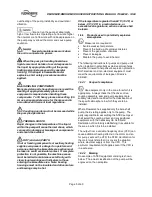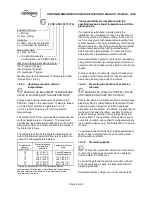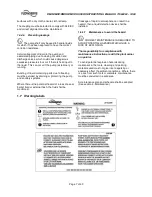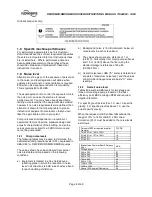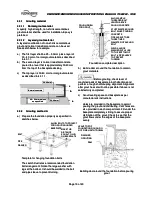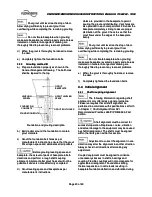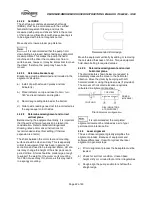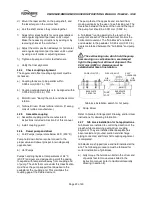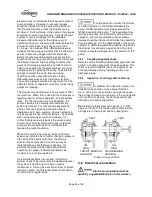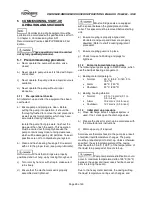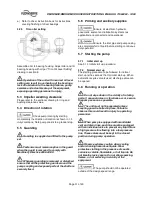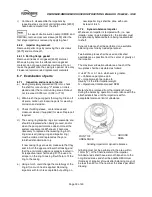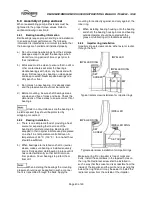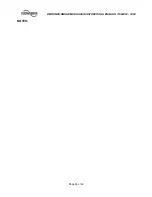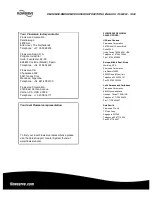
DMX/DMXD/DMXH/DMXDH USER INSTRUCTIONS ENGLISH 71569282 - 10/09
Page 32 of 60
a) Never operate the pump with suction valve
closed.
b) Never operate pump unless it is filled with liquid
and vented.
c) Never operate the pump unless a liquid source is
available.
d) Never operate the pump without proper
lubrication.
5.8.1
Operating checks
In the interest of operator safety, the
unit must not be operated above or below the
nameplate conditions. Such operation could result in
unit failure causing injury to operating personnel
.
Operation at low flows results in pump
power heating the liquid. A bypass may be required
to prevent vaporization and subsequent pump
damage. Mechanical damage may result from
continuous operation at flows less than the minimum
flow specified in the section 10.4
Customer Data
Sheet.
Immediately after start-up, and frequently during
running, check the following:
a) Check suction and discharge pressure gauges.
b) Check pressure gauges on each side of suction
strainer.
c) Check for excessive leakage.
d) Check for unusual noises.
e) Check oil rings to ensure they are rotating.
Eye protection required to perform this
action.
f) Check oil level in pump bearing housings.
g) Check for adequate flow of cooling liquids.
h) After unit has been operated a sufficient length of
time to reach normal operating temperature and
condition, the unit is to be shut down and a
“HOT” coupling alignment check must be made.
(Refer to
shaft /coupling alignment
procedure).
Operation of the unit without appropriate
lubrication can result in overheating of the
bearings, bearing failures, pump seizures and
actual breakdown of the equipment, exposing
operating personnel to injury.
5.9 Stopping and shutdown
If motor driven, de-energize driver circuit. If turbine
driven, stop turbine-driven pumps by manually
tripping the overspeed trip.
If pump stops abruptly when driver is shut
down, investigate for pump binding. Take necessary
remedial action before restarting pump.
If pump is subjected to freezing
temperatures, the pump must be drained of liquid to
prevent damage to pump.
a) Close the pump suction and discharge valve.
b) Close valve in bypass line.
c) Drain the pump.
5.10 Hydraulic, mechanical and electrical
duty
These pumps are furnished for a particular service
condition. Changes in the operating system design
may affect the pump’s performance adversely. This is
especially true if the changes reduce the pressure at
the suction flange or if the liquid temperature is
increased. In case of doubt, contact the nearest
Flowserve office.
5.10.1 Specific gravity (SG)
The capacity and total head in m (ft) of liquid
developed by a centrifugal pump are fixed for every
point on the curve and are always at the same speed.
Neither capacity nor total head will be affected by a
change in the specific gravity of the liquid pumped.
However, since the developed pressure in bar (psi)
and the power to drive the pump are a function of the
specific gravity of the liquid, both will be affected in
direct proportion by any change in specific gravity.
Therefore, a change in specific gravity will affect the
discharge gauge pressure and power. Any changes
should be noted, in that they may overload the
pump’s driver.

